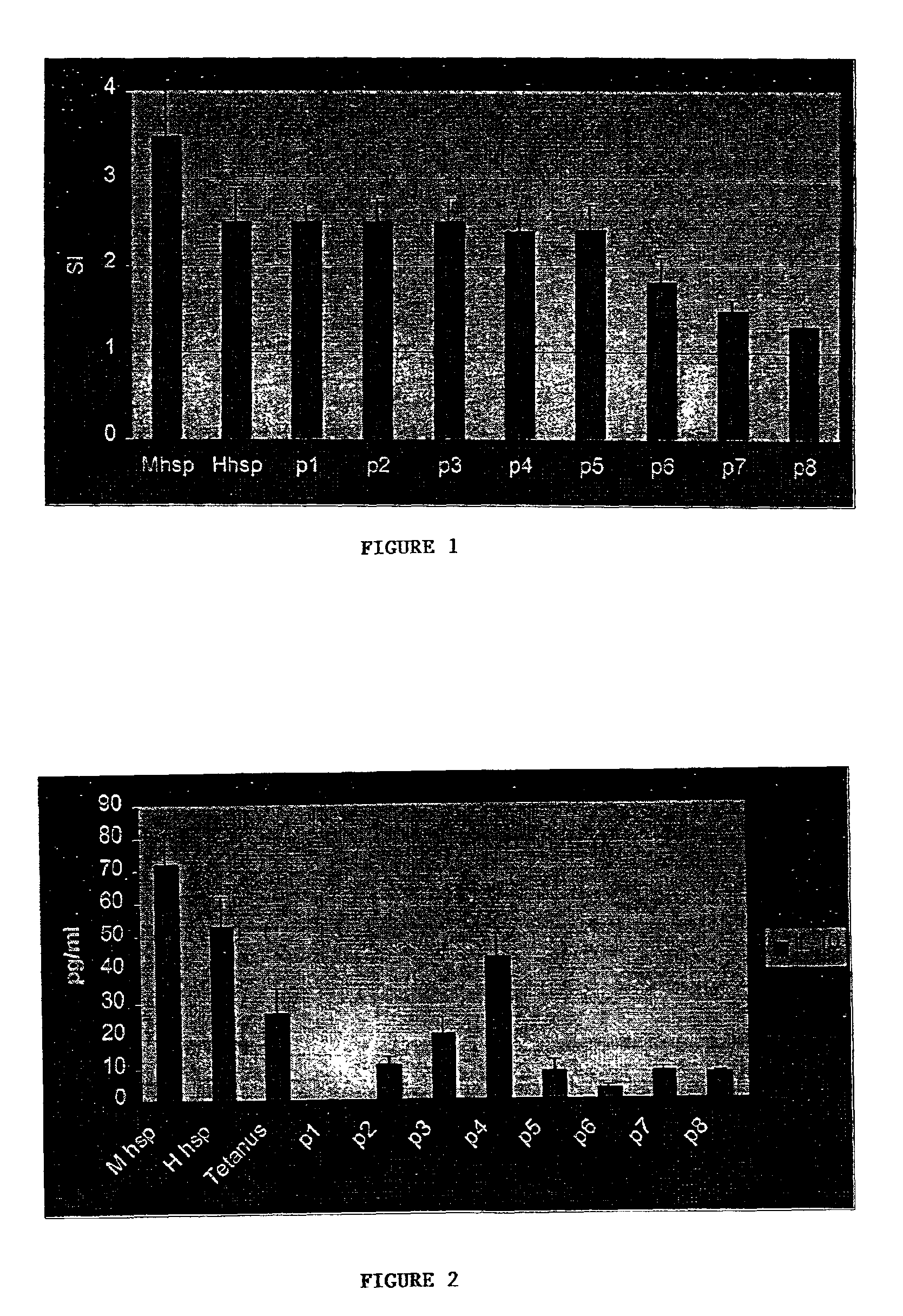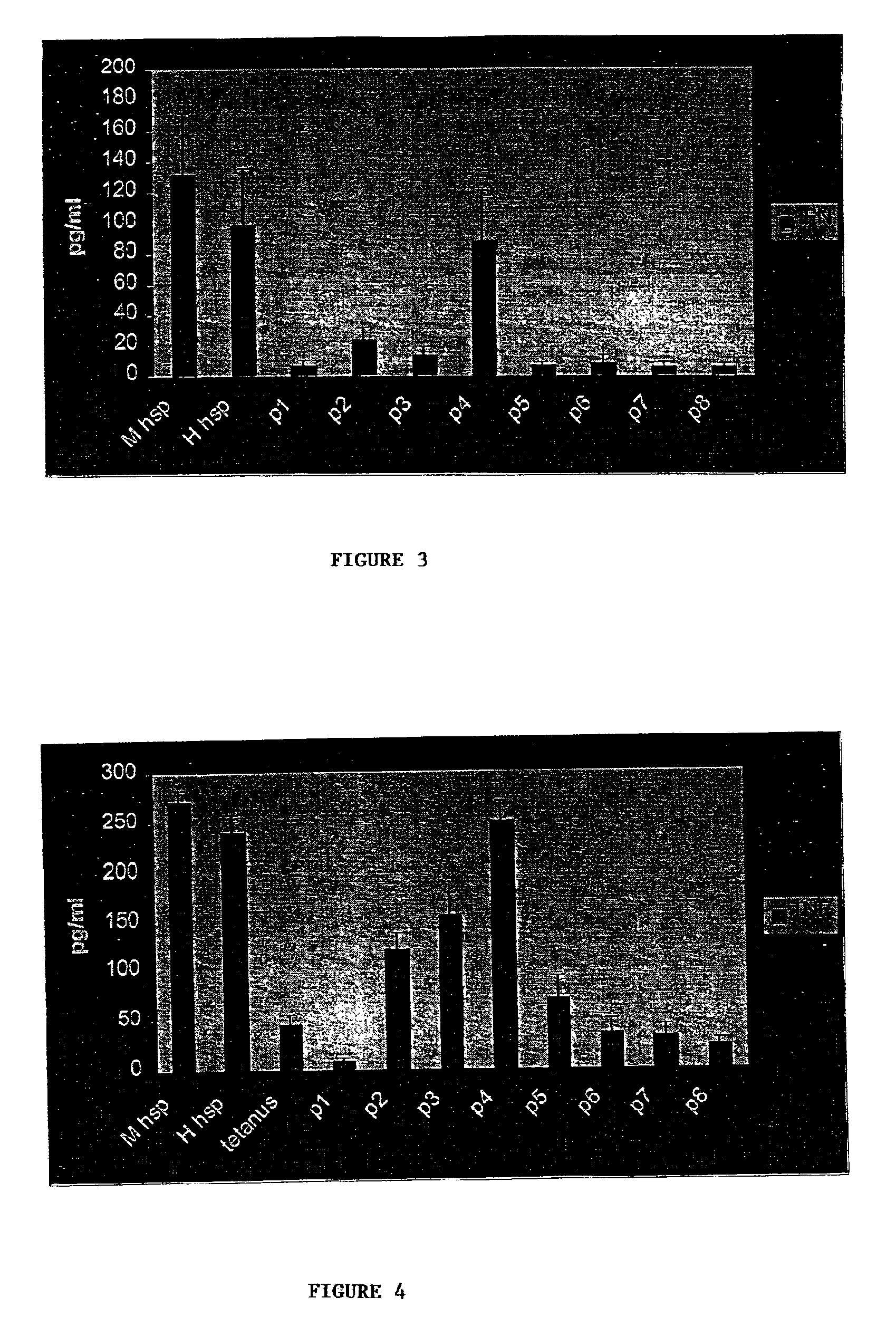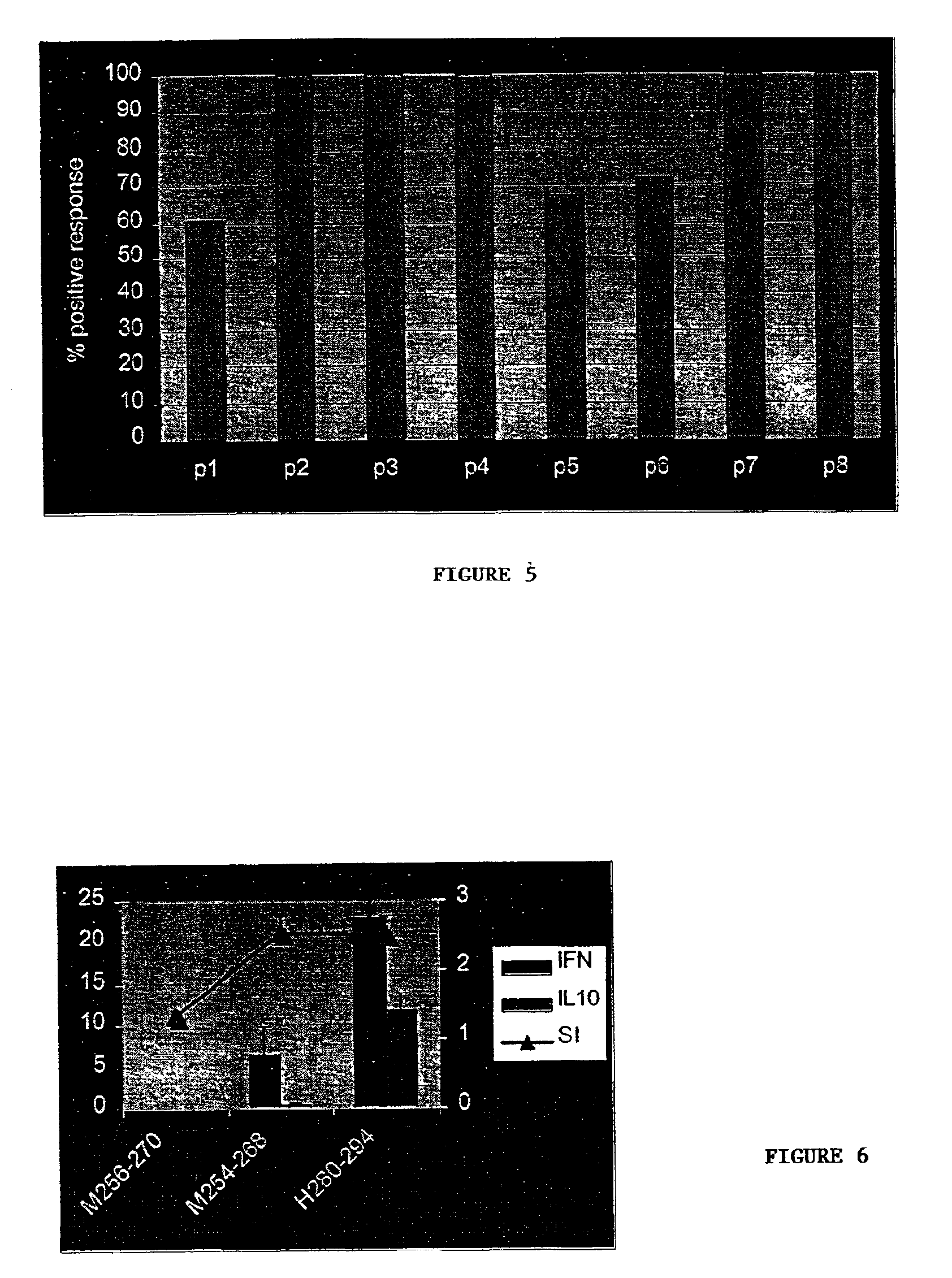Stress proteins and peptides and methods of use thereof
a technology of stress proteins and peptides, applied in the field of stress-related peptides, can solve the problems of pathogenic t cells infiltrating the infiltrating environment, harming the organism itself,
- Summary
- Abstract
- Description
- Claims
- Application Information
AI Technical Summary
Benefits of technology
Problems solved by technology
Method used
Image
Examples
example 1
Peptide Identification
[0123]To identify the promiscuous pan-DR peptides a computer algorithm described in U.S. Pat. No. 6,037,135 (incorporated herein by reference in its entirety) that identifies motifs for binding of peptides to various MHC class II molecules was used. Sequences of both mycobacterial and human hsp60 were scanned, and based on the predicted binding of peptide sequences to three subtypes of HLADR, namely DR1, DR4 and DR7, peptides were designed (Table 1). The peptides were selected on the level of predicted binding to DR1, 4, and 7. The peptides of the present invention including those listed in Table 1 have been identified by in vitro tests for the ability to induce the proliferation of autoreactive T cells or to induce the secretion of cytokines (e.g., lymphokines) from these T cells or to induce other effector functions such as cytotoxicity.
[0124]An epitope identified by the computer algorithm was considered eligible when it was predicted to have sufficient affin...
example 2
T-cell Proliferation
[0125]To test T cell proliferation a direct culture of Peripheral Blood Mononuclear Cells (PBMC) were contacted with the peptides of Table 1. Over 80 subjects with JIA were tested. The group consisted of a random selection of subjects with all subtypes of JIA, during different phases of disease activity and medical treatment. PBMC of subjects were tested in a standard proliferation assay. PBMC were isolated from heparinized blood using a Ficoll Isopaque density gradient. PBMC were cultured at a number of 200,000 cells per 200 microliter (μl) per well in 96 well round bottom plates in RPMI containing 15% AB serum. Cells were cultured for 6 days (120 hours) at 37° C. in 5% CO2 with 100% relative humidity. During the last 16 hours of culture 1 μCi (=37 kBq) tritiated thymidine was added to each well. Incorporated radioactivity was measured by liquid scintillation counting and expressed as counts per minute (cpm). The magnitude of the proliferative response was expre...
example 3
Identification of DNAJP1 as a Pro Inflammatory Epitope in Patients With RA
[0129]A peptide from the heat shock protein dnaJ was previously identified as a trigger of T cell proliferation and production of pro-inflammatory cytokines from peripheral blood and synovial fluid cells of RA patients. This peptide (dnaJP1:QKRAAYDQYGHAAFE) (SEQ ID NO:10), shares sequence homology with the “shared epitope”, a five amino acid stretch in common among RA-associated HLA allels. This study is a Phase I Immune Tolerization study conducted to determine whether in RA interplay between HLA and dnaJ-derived peptides maintains and stimulates T cells, which participate in autoimmune inflammation. The trial (n of patients who completed=13) was designed in order to adhere to the American College of Rheumatology (ACR) 20 criteria for evaluation of efficacy.
[0130]Data from Phase I: The data shown in FIGS. 7A-E and 8A-E stem from a Phase I trial in which a total of 13 human RA patients were treated with three ...
PUM
| Property | Measurement | Unit |
|---|---|---|
| concentrations | aaaaa | aaaaa |
| heat shock protein | aaaaa | aaaaa |
| heat shock | aaaaa | aaaaa |
Abstract
Description
Claims
Application Information
 Login to View More
Login to View More - R&D
- Intellectual Property
- Life Sciences
- Materials
- Tech Scout
- Unparalleled Data Quality
- Higher Quality Content
- 60% Fewer Hallucinations
Browse by: Latest US Patents, China's latest patents, Technical Efficacy Thesaurus, Application Domain, Technology Topic, Popular Technical Reports.
© 2025 PatSnap. All rights reserved.Legal|Privacy policy|Modern Slavery Act Transparency Statement|Sitemap|About US| Contact US: help@patsnap.com



